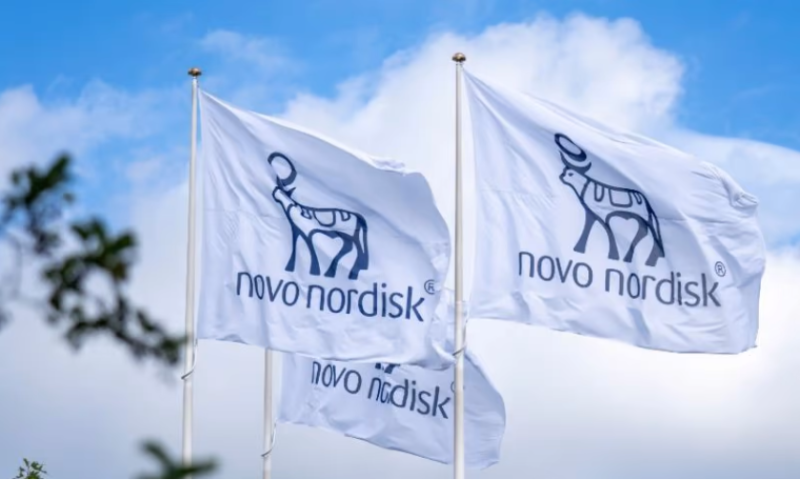Hemlibra’s days as the hemophilia head honcho may be numbered. At least, that seems to be the hope of Novo Nordisk, which released back-to-back trial data for two of its own assets for the bleeding disorder over the past few days.
First came the publication on Sunday of phase 3 data for the anti-tissue factor pathway inhibitor antibody concizumab to treat people with both hemophilia A and hemophilia B with inhibitors. Inhibitors are an immune system response to the clotting factors that cause hemophilia treatments to stop working.
The results of the explorer7 study, which showed an 86% reduction in treated spontaneous and traumatic bleeds, exceeded the “wildest dreams” of Novo Nordisk’s chief medical officer for rare disease, Stephanie Seremetis, M.D.
“It’s a remarkable result,” Seremetis told Fierce Biotech in an interview. “As still a card-carrying member of the hemophilia community, I consider this a really important potential contribution for patients with hemophilia.”
The overall median annualized bleeding rate—a measure of reported bleeding events—for patients on concizumab was zero, compared to 9.8 for those who didn’t receive the treatment. Twenty-one (63.6%) of those on concizumab experienced no treated bleeds, compared to just two (10.5%) of those who didn’t receive the prophylaxis therapy.
Concizumab made headlines for all the wrong reasons back in March 2020, when the Danish pharma was forced to halt trials over reports of blood clots in three patients. The studies resumed five months later, and Seremetis insists those issues are now in the rearview mirror.
“We worked with the FDA and the European agencies to evaluate the data from these three cases,” she says. “We described a mitigation strategy that has clearly been effective and since we restarted the trials we had no additional thrombotic events.”
The drugmaker clearly feels confident: It is has already submitted concizumab to the FDA for approval with the hope of a decision next year, Novo Nordisk’s rare disease head Ludovic Helfgott revealed to Fierce.
But with Roche’s blockbuster Hemlibra dominating the hemophilia landscape—the bispecific antibody raked in over $3 billion worldwide (PDF) for the Swiss pharma in 2021 alone—can concizumab find its own niche?
“Well, hopefully it’s bigger than a niche,” said Helfgott. He points to the expanding range of hemophilia patients and the varying treatment options they now require, from the elderly to the active to those with complex comorbidities.
“When you understand that dynamic of many treatment approaches, and many kinds of patients, you clearly understand that there is absolutely a need to individualize prophylaxis to the various needs of these patients,” he added. “Concizumab is really made for that.”
Administered as a daily dose via a “patient-friendly pen,” which Novo Nordisk compares to how individuals with diabetes can self-administer insulin, the therapy is aimed at patients who “want the certainty of very high protection extremely fast,” Helfgott said.
Unlike Hemlibra, concizumab can be taken by patients with hemophilia B, for which there are currently limited treatment options. But some hemophilia A patients may presumably find daily dosing a chore in comparison to Roche’s mainstay, which can be taken as rarely as once every month depending on the patient. That’s where Novo Nordisk’s other recent trial result comes into play.
Meet Mim8
An phase 1/2 readout Monday showed that its other hemophilia therapy, dubbed Mim8, was tolerated at all doses. While six of seven participants in the lowest weekly dose cohort reported at least one bleed, only two of the 25 patients in the higher weekly dose cohorts reported bleeds. No bleeds were reported in the eight individuals who received a monthly dose, the company noted.
Like Hemlibra, Mim8 is designed to bring together factor IXa and factor X, proteins involved in the natural coagulation cascade, and restore the blood clotting process for people with hemophilia A.
The theory is that Mim8 will offer more choice to patients with hemophilia A with inhibitors who want a bispecific antibody therapy that they can dose weekly, biweekly or monthly, Seremetis explained. “We see it as very important to offer an alternative to [Hemlibra]. I think the hemophilia community has not ever been comfortable with having only one provider of one kind of therapy.”
With Mim8 on track to enter a phase 3 trial by the end of the year, Roche may already be looking over its shoulder. The drugmaker certainly used the International Society on Thrombosis and Haemostasis Annual Congress in London—where Novo Nordisk announced both its studies—to release a new phase 3 analysis showing Hemlibra provided effective bleed control in people with moderate or mild hemophilia A, without factor VIII inhibitors.
No regrets
There’s clearly going to a hard fight ahead to muscle into the hemophilia space, so does Novo Nordisk regret having focused on antibodies in the short term, rather than beginning with more eye-catching options like gene therapies to target this condition?
“We’re not regretting at all that we continue to invest into monoclonal antibodies,” said Helfgott, who points out that the company is still investing in next-generation gene editing technology as well as a range of other technologies like RNAi.
“When you look at the arrival of [Hemlibra] a few years ago, that certainly was a revolution for some patients,” he added. “But it’s not the end of the story. We still see an observable major unmet need across the globe.”

